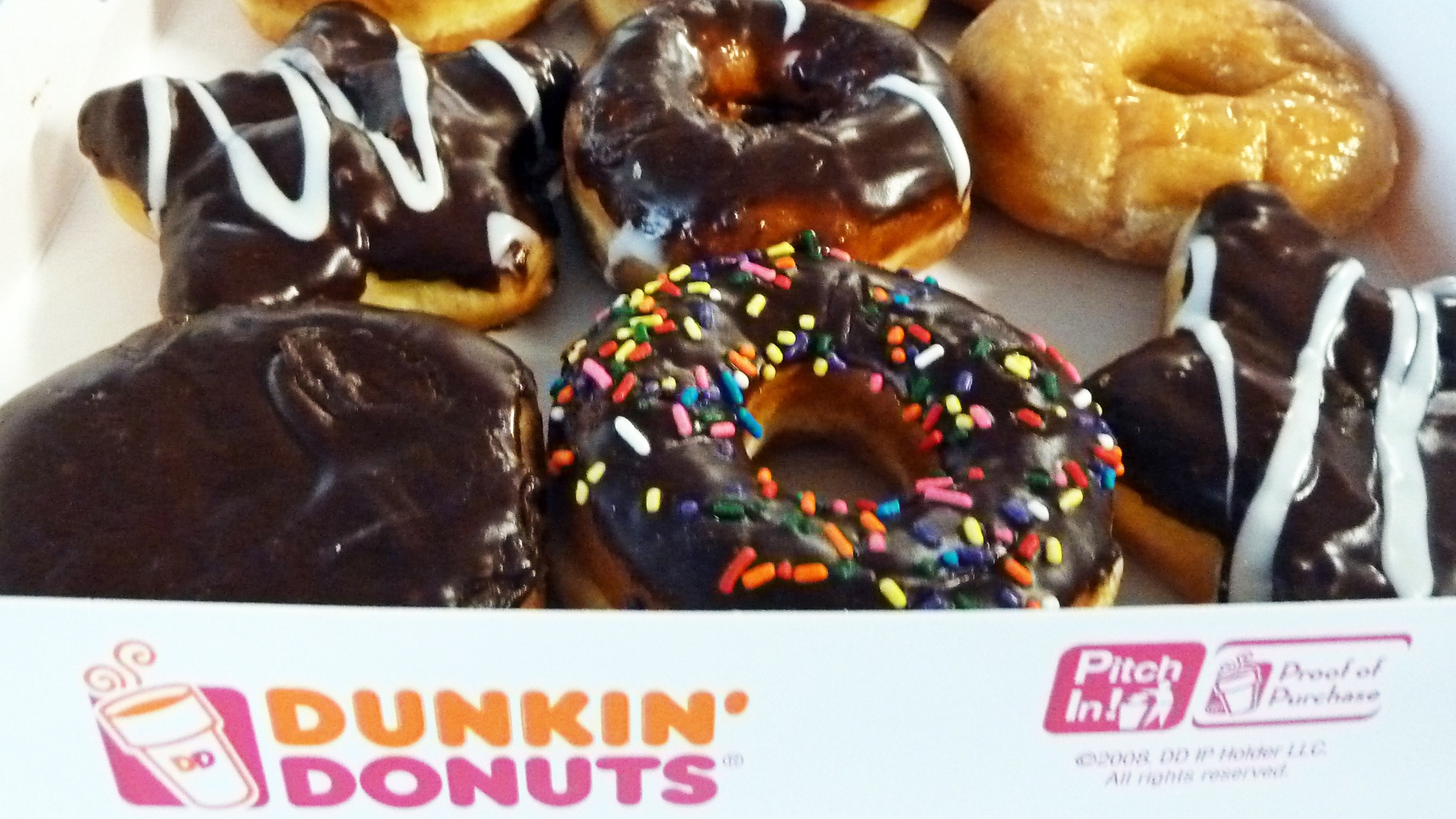Dunkin' Donuts' New Year's Resolution: Get Rid Of Artificial Coloring
Let's face it: When most of us stop for a doughnut on our way in to work in the morning, we're not really thinking about our health. In fact, sometimes the clearly not-from-nature insanely colored sprinkles or brightly hued frostings are exactly what draw us in. Good news for fans of morning sugar: Dunkin' Donuts kicked off 2018 by announcing plans to make that breakfast stop a little less guilt-inducing, declaring that doughnuts "now sold at Dunkin' Donuts restaurants nationwide are no longer being made using colors from artificial sources."
This movement goes along with a previous announcement from Dunkin' Brands Group, which also runs ice-cream chain Baskin-Robbins, in which it "pledged to eliminate artificial dyes from all of its food and beverages in the U.S. by the end of 2018," including ice cream, syrups, sauces, and sprinkles.
That's all and well and good, but we wondered: What are the actual advantages of natural food coloring? It doesn't appear that Dunkin' will suffer from a lackluster, all-natural palette: The chain's new Snow Flurries doughnut, for example, has bright blue icing with snowflake sprinkles. But then, we grew up in the age of the still-banned red dye no. 2, which caused M&Ms to toss its red candies for a decade, even though they didn't even use red dye no. 2. So what can Dunkin' accomplish with this switch?
According to registered dietitian Ian Cohen, "The FDA tends to err on the side of caution when it comes to artificial dyes; there's a limit to what kinds of food coloring can be used and the amount." Still, we seem to want our food to be pretty and bright: Healthline reports that "artificial food dye consumption has increased by 500 percent in the last 50 years, and children [unfortunately but unsurprisingly] are the biggest consumers." Usually bolder than natural food colors, artificial tints are mostly made from petroleum, and some studies have pointed to an association between these food colorings and hyperactivity and even cancer (as in the red dye no. 2 ban, when a Soviet study claimed that the substance led to tumors in rats). But Cohen points out, "as with most nutritional studies, correlation does not equal causation. That being said, removing artificial food coloring almost certainly has no downside aside from aesthetics but... you're still eating a doughnut."
